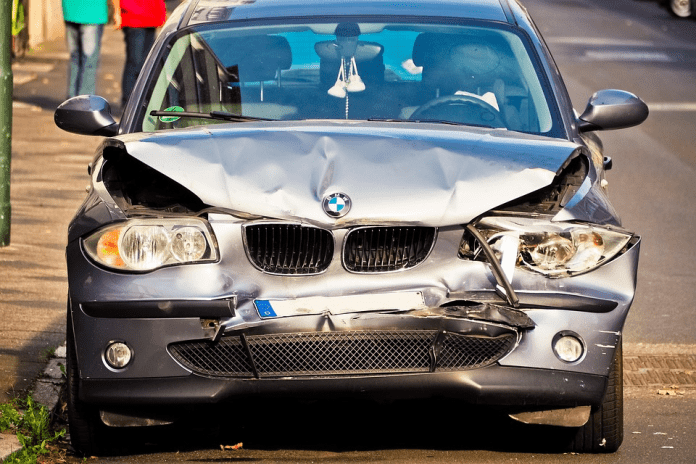
Car accidents can be life-altering events, leaving victims with physical injuries, emotional trauma, and financial burdens. Determining who is at fault is often the most crucial step in securing fair compensation. Liability in car accidents can be complicated, involving multiple parties, insurance policies, and legal nuances. This article explores how car accident lawyers prove fault, the methods they use, and what victims should know to protect their rights.
Understanding Fault in Car Accidents
Fault in car accidents refers to the party responsible for causing the crash. Establishing fault is critical for insurance claims, personal injury lawsuits, and recovering damages. In some cases, fault is clear, such as a driver running a red light. In others, liability may be shared among multiple parties.
Comparative vs. Contributory Negligence
States use different legal standards to assess fault. Comparative negligence allows damages to be distributed according to each party’s degree of responsibility. For example, if a driver is 30% at fault, their compensation is reduced by that percentage. Contributory negligence, however, is stricter. In states following this rule, if the victim contributed in any way to the accident, they may be barred from recovering damages entirely.
Understanding these legal distinctions is essential because your car accident lawyer will build a strategy based on your jurisdiction’s laws.
Key Factors Car Accident Lawyers Consider When Determining Liability
Car accident lawyers consider multiple factors when proving fault. The process involves thorough investigation, gathering evidence, and applying legal standards to establish responsibility.
Traffic Laws and Violations
One of the first steps in determining fault is examining whether traffic laws were violated. Speeding, running stop signs, texting while driving, or driving under the influence are all violations that can strongly indicate liability. Lawyers use police reports, eyewitness statements, and traffic citations to support claims.
Driver Behavior and Negligence
Lawyers evaluate the behavior of all drivers involved. Negligence can include reckless driving, failing to yield, or distracted driving. By documenting how each party behaved before and during the accident, attorneys can build a compelling case for liability.
Road Conditions and Environmental Factors
Sometimes, external factors like poor road conditions, defective traffic signals, or inclement weather contribute to accidents. While these factors may not absolve drivers of responsibility, they can influence how liability is determined. Lawyers may consult traffic engineers or accident reconstruction specialists to evaluate these conditions.
The Role of Evidence in Proving Liability
Evidence is the backbone of any legal case involving car accidents. Lawyers meticulously collect and analyze evidence to demonstrate fault.
Police Reports
Police reports provide an official account of the accident, including statements from involved parties, witnesses, and law enforcement officers. These reports often include citations issued for traffic violations, which can directly impact fault determination.
Eyewitness Testimony
Eyewitnesses can provide crucial perspectives on how the accident occurred. Lawyers often interview witnesses soon after the crash to ensure the accuracy and reliability of their accounts.
Photographs and Video Footage
Visual evidence, including photos from the scene and surveillance or dashcam footage, can show vehicle positions, road conditions, and other critical details. Such evidence helps establish a timeline and sequence of events leading up to the collision.
Accident Reconstruction Experts
In complex cases, attorneys may hire accident reconstruction experts. These professionals use physics, vehicle damage analysis, and computer simulations to recreate the accident and determine causation. Their findings can be instrumental in proving fault in court or during insurance negotiations.
Insurance Companies and Liability
Insurance companies play a significant role in establishing fault. After an accident, claims adjusters investigate to determine liability and calculate payouts. Understanding the insurance process is critical for protecting your legal rights.
How Insurance Investigations Work
Insurance companies review police reports, witness statements, medical records, and vehicle damage assessments. They may also interview drivers to gather additional information. Lawyers help ensure that victims are not pressured into accepting settlements before liability is fully assessed.
Common Challenges with Insurance Claims
Insurance companies may attempt to minimize payouts by disputing fault or alleging shared liability. Car accident lawyers advocate for victims by presenting strong evidence and challenging any unfair assertions. For more context on insurance companies in the United States, you can refer to this comprehensive list: List of United States insurance companies.
Legal Strategies for Proving Fault
Proving liability often requires more than presenting evidence. Lawyers employ specific legal strategies to strengthen a case and increase the likelihood of compensation.
Gathering Comprehensive Evidence
Lawyers systematically collect all relevant evidence, including medical records, vehicle repair estimates, and witness statements. Comprehensive documentation creates a clear picture of the accident and its consequences.
Establishing Negligence and Duty of Care
A central element in car accident cases is proving negligence. Lawyers demonstrate that the at-fault driver owed a duty of care, breached that duty, and caused the accident and resulting damages. This involves linking actions (or inactions) directly to the victim’s injuries.
Demonstrating Causation
Causation is critical for liability claims. Attorneys must show that the accident directly caused the injuries or property damage. This often involves medical expert testimony, accident reconstructions, and detailed analysis of events leading up to the crash.
Negotiating with Insurance Companies
Once liability is established, lawyers engage with insurance companies to negotiate fair settlements. They leverage evidence, legal precedents, and expert opinions to advocate for compensation that fully covers medical expenses, lost wages, and other damages.
When Multiple Parties Are Involved
Some accidents involve multiple drivers, businesses, or governmental entities. Liability in such cases can be complicated. Lawyers must carefully assess each party’s contribution to the accident.
Shared Liability Scenarios
In multi-vehicle accidents, each driver’s actions are evaluated. Lawyers analyze factors such as right-of-way violations, lane changes, and failure to maintain control to apportion fault appropriately.
Product Liability and Third-Party Involvement
Sometimes, vehicle defects or hazardous road conditions contribute to accidents. Lawyers may hold manufacturers, contractors, or government agencies partially responsible. This expands the scope of liability and ensures victims can recover from all responsible parties.
The Importance of Hiring a Car Accident Lawyer
Engaging a skilled lawyer significantly improves your chances of successfully proving fault and securing compensation. Legal representation is especially crucial when disputes arise over liability, damages, or insurance claims.
Advantages of Professional Legal Assistance
- Expert Evidence Handling: Lawyers know how to collect, preserve, and present evidence effectively.
- Insurance Negotiation: Attorneys handle communication with insurance adjusters, preventing victims from accepting lowball settlements.
- Legal Knowledge: Experienced lawyers understand state laws, negligence standards, and procedural requirements.
- Trial Representation: If necessary, attorneys can take cases to court and advocate for victims in front of a judge or jury.
Finding the Right Lawyer
Choosing the right legal representation is critical. Victims should seek attorneys with experience in car accident cases, a strong track record of success, and expertise in negotiating with insurance companies. A Connecticu Car accident lawyer can provide guidance tailored to your case and jurisdiction.
Steps to Take After a Car Accident
Knowing what to do immediately after a collision can protect your rights and strengthen your case.
Safety and Medical Attention
First, ensure everyone is safe and seek medical care if necessary. Injuries may not be immediately apparent, so prompt evaluation is important.
Documentation and Evidence Collection
Take photos of the accident scene, vehicles, and any visible injuries. Gather contact information for witnesses and involved parties. Accurate documentation is invaluable for proving fault.
Reporting the Accident
Report the accident to local authorities and your insurance company. Be honest but avoid admitting fault, as statements can be misinterpreted during claims investigations.
Legal Consultation
Consult a car accident lawyer as soon as possible. Early legal involvement ensures that evidence is preserved, deadlines are met, and strategies are developed to protect your compensation rights.
Conclusion
Determining fault in car accidents can be complex, but understanding how liability is proven helps victims navigate the legal and insurance processes. From traffic violations and driver behavior to evidence collection and expert testimony, car accident lawyers play a crucial role in establishing responsibility and advocating for fair compensation. Whether accidents involve single or multiple parties, professional legal guidance ensures that victims’ rights are protected and that all avenues for recovery are explored.
By following these steps and enlisting experienced legal counsel, accident victims can confidently pursue the compensation they deserve while navigating the often-complicated landscape of car accident liability.
About the author: Mark Scott

With a law degree under his belt, Mark Scott understood very early that law communication was a relatively neglected area. He decided to help people by “translating” the language and offering information and advice in a clear, helpful, and actionable manner. For this reason, instead of finding him in court, you will most likely find his name online, where he is very active and thriving as a legal columnist. His part of making the world a better place is to make the law a less convoluted maze. He aims to make it easier for people to understand when and how to seek legal counsel, how to proceed in a significant number of legal matters, and how to find the proper resources so they can stand up for their rights.



